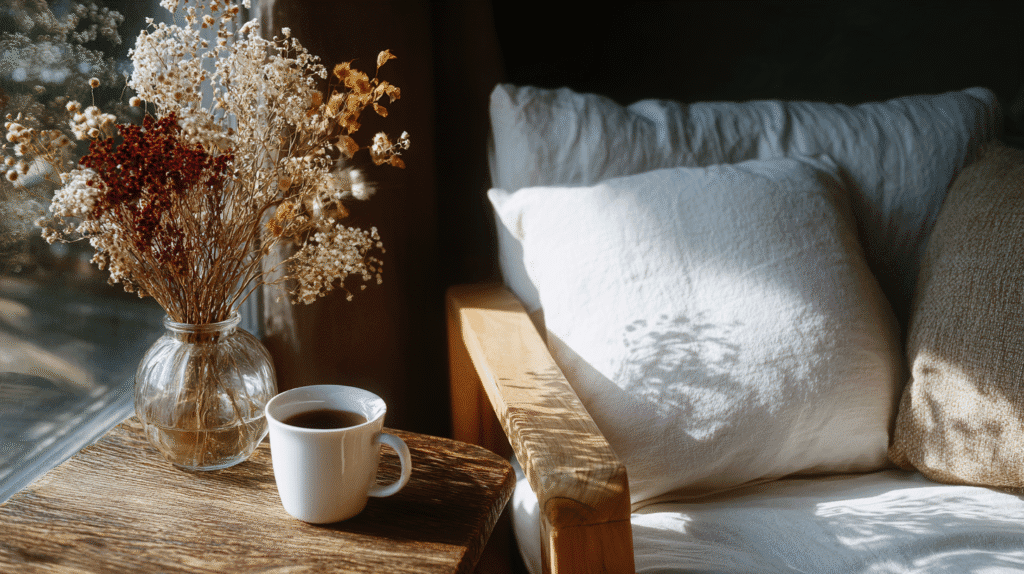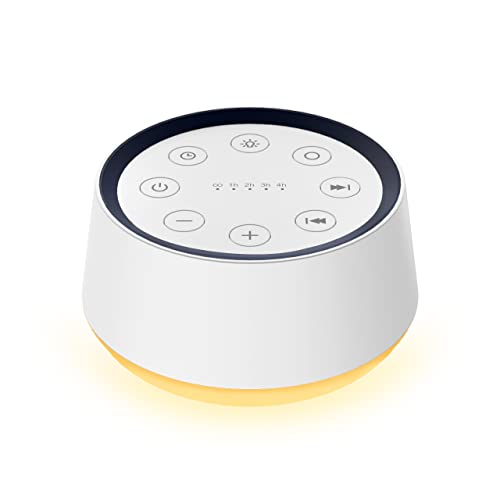This post may contain affiliate links, including those from Amazon Associates. If you make a purchase through these links, I may earn a commission at no additional cost to you. Learn more about our affiliate policy.
There was a time when I thought my home looked tidy enough, organized and neat on the surface.
Yet, despite appearances, stepping through my front door still left me feeling subtly drained and overstimulated.
I’d pause in my kitchen after a long day, unsure why I couldn’t settle into rest, as though invisible static hung in the air.
It wasn’t obvious at first, but I eventually learned that my nervous system was responding to unseen sensory cues.
Our nervous systems continuously scan our environment, asking one simple question: “Am I safe here?”
Bright lights, cluttered surfaces, loud noises can silently keep our bodies in a state of subtle alertness, a low hum of readiness that’s exhausting.
But when our spaces reflect ease, comfort, and clarity, our nervous systems can relax into genuine rest.
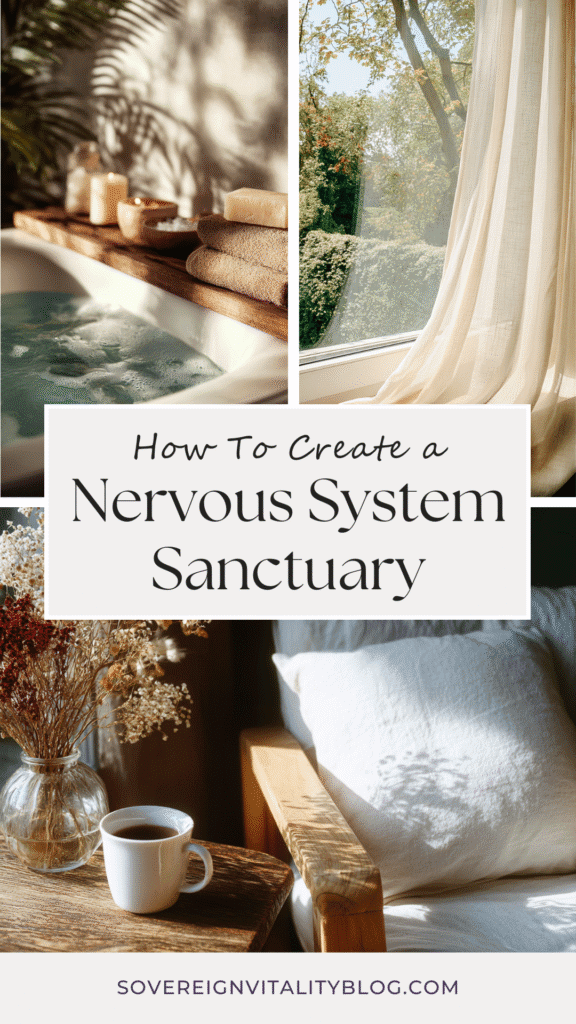
Creating a nervous system sanctuary at home isn’t about aesthetics or expensive décor. It’s about small shifts that send calming signals to your body. These signals tell you: “It’s okay here. You can rest.”
Why Environment Matters for Nervous System Regulation
Our surroundings affect us on a subconscious level, shaping our moods, emotions, and even physical responses.
The textures beneath our fingertips, the quality of the light, and the ambient sounds around us are sensory inputs that impact how safe we subconsciously feel.
When our environment is overstimulating, cluttered, or harsh, our nervous systems remain subtly tense, bracing against overwhelm.
You might not even realize your environment is causing stress. But there are subtle signs:
- Feeling restless at home, unable to unwind
- Experiencing fatigue despite resting
- Avoiding certain rooms or areas without knowing why
- Difficulty transitioning from productivity to relaxation
When you understand these signals as messages from your nervous system, you can begin reshaping your space to cultivate calm.
For a deeper room-by-room approach, explore how to create a peaceful home that supports nervous system regulation on our sister site with small, sensory-focused tweaks.
6 Elements of a Nervous System Sanctuary
Your home becomes a true sanctuary when you mindfully tend to these six key sensory areas: Light, Sound, Texture, Scent, Layout, and Emotional Anchors.
1. Light: Soften and Warm the Glow
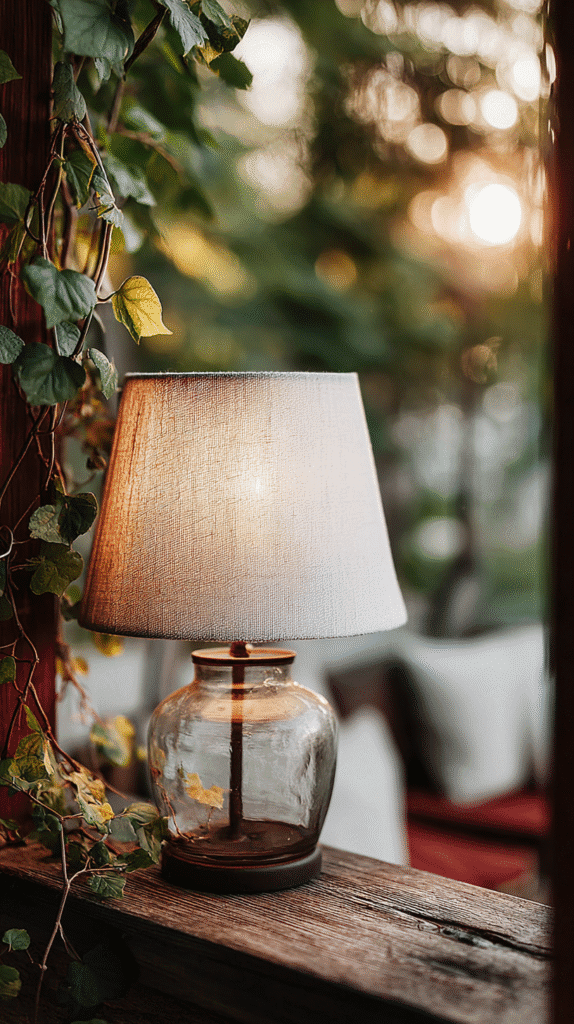
Lighting directly influences your nervous system, helping it shift from alertness to relaxation. The quality of your light matters a great deal, especially at transitional times like morning and evening.
Practical ideas to enhance calming lighting:
- Open blinds early for natural morning light, regulating circadian rhythms
- Switch from bright overhead lights to soft lamps with warm bulbs after sunset
- Use candles or diffused lighting in the evening as visual cues to wind down
- Incorporate dimmable LED bulbs in high-use areas, allowing flexible brightness levels
Pairing warm lighting with your evening routine can improve sleep significantly. I dive deeper into this practice here: 7 Sunday Habits That Help You Sleep Better All Week.
2. Sound: Lowering the Volume of Life
Auditory input can subtly overstimulate us. Background TV, noisy appliances and city sounds may be considered white noise, but they matter.
Creating auditory calm at home provides immediate relief.
Easy ways to create soothing soundscapes:
- Play ambient sounds or nature playlists at low volume. A brown noise machine can smooth out city sounds without feeling overstimulating.
- Use soundproof velvet curtains or rugs to absorb echo and soften acoustics
- Choose quiet background noise deliberately, avoiding constant overlapping sounds
- Introduce intentional silence each day, moments with minimal stimulation

3. Texture: Inviting Comfort Through Touch
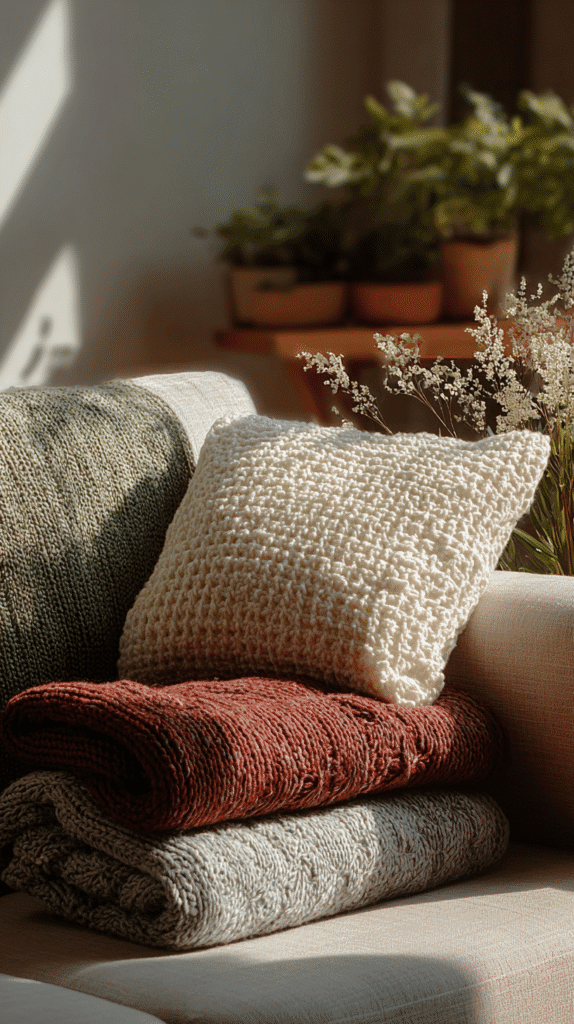
Touch is a powerful yet subtle regulator of your nervous system, offering cues of comfort and safety. Tactile experiences remind your body to release tension and settle.
Comforting textures to incorporate at home:
- Soft textured blankets with natural fibers like linen, cotton, and wool
- Rugs or mats that invite indoor barefoot grounding
- Plush pillows or cushions to promote support and deeper relaxation

4. Scent: Create Calm Through Aromatic Signals
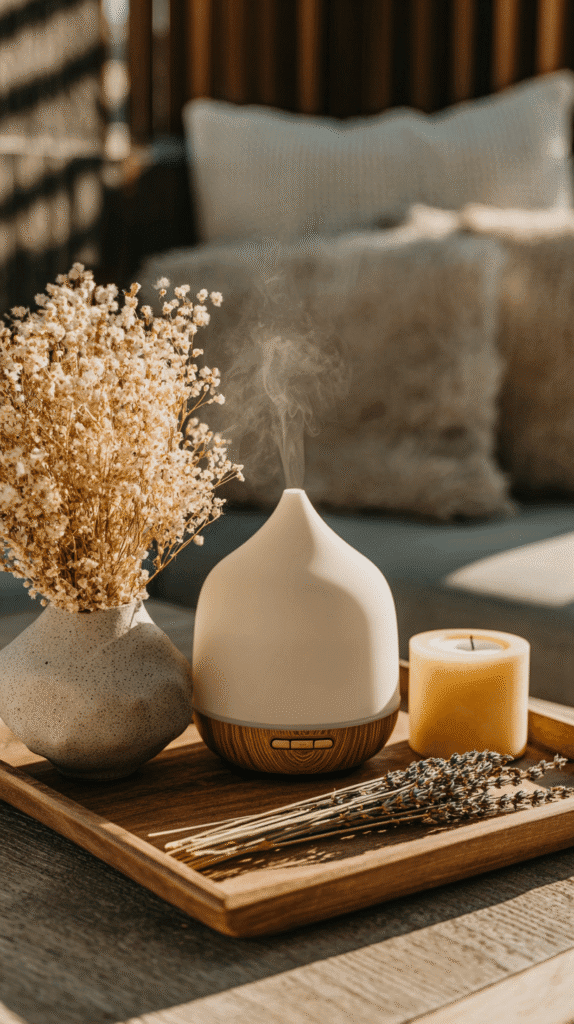
Our sense of smell bypasses logical thinking and speaks directly to the limbic system, which governs emotional responses.
Aromatic signals at home can quickly soothe anxiety and promote restful states.
Consider these aromatic practices:
- Essential oil diffusers using lavender, vetiver, bergamot, or chamomile
- Simmer pots filled with citrus, rosemary, or cloves for a comforting atmosphere
- Beeswax candles, which emit a subtle honey scent that soothes anxiety
- Herbal teas simmering gently on the stove, offering comforting aromas throughout your home

5. Layout: Encouraging Ease and Flow
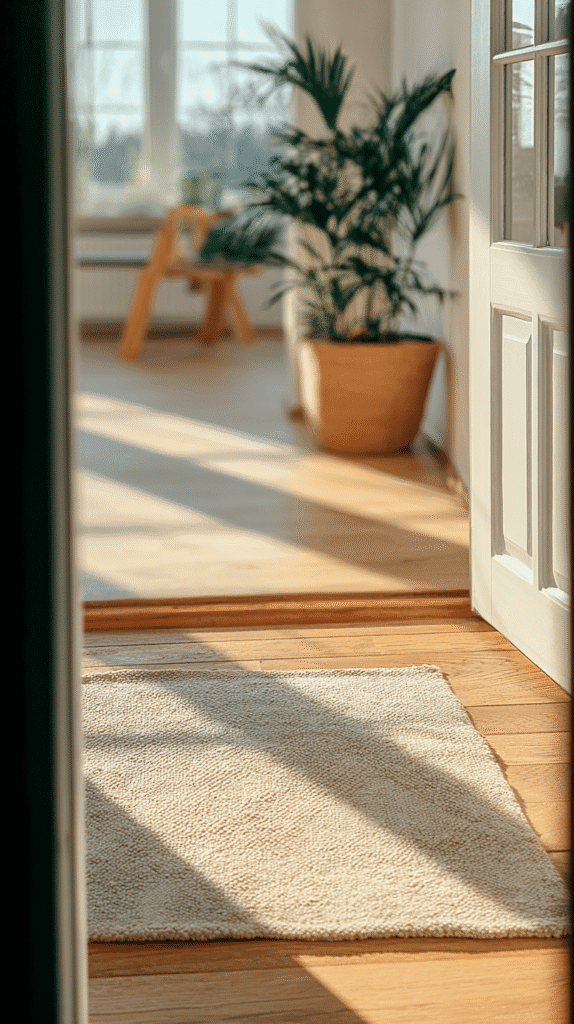
The physical flow of your home shapes how your body experiences daily tasks. Simple layout adjustments can significantly reduce unconscious tension.
Easy layout improvements:
- Maintain clear paths through your home to avoid unnecessary friction
- Minimize clutter on surfaces to support visual calm. Here is a 15-minute daily decluttering practice to try.
- Arrange seating to face calming focal points, like a window or fireplace
- Keep essential items easily accessible, reducing small daily stressors
When reorganizing your home, Sundays can provide the ideal moment to reset not just your routines, but your space. I share more on integrating these resets here: How To Prep Your Nervous System for the Week.
6. Emotion: Anchor Your Space with Meaning
What surrounds us can quietly affirm our emotional safety or subtly trigger unease. Intentionally choosing what to display around your home can reinforce feelings of safety and ease.
Ways to anchor your space emotionally:
- Display objects that spark comfort or inspiration like a treasured photo, a meaningful stone, a piece of art
- Incorporate reminders of positive memories or affirmations in visible locations
- Regularly update your surroundings to reflect your evolving identity and desires
- Remove items that evoke stress or negative emotional memories, keeping only what nourishes you emotionally
Build Your Sanctuary Basket or Reset Zone

You don’t have to overhaul your entire home at once. Consider creating a portable sanctuary: a dedicated tray, basket, or drawer containing everything needed for quick nervous system resets.
Your sanctuary basket might include:
- Favorite relaxing herbal tea blends
- Magnesium spray or lotion for relaxation
- A journal and pen for emotional clarity
- Cozy accessories like warm wool socks, a blanket, or a wrap
- Access to a calming playlist or nature sounds
- Small grounding objects like stones or crystals
This basket serves as your mobile sanctuary, making it easy to reconnect with calm even on busy days. It’s also perfect for your weekly reset practice, as discussed here: How To Create the Ultimate Sunday Reset for Your Nervous System.

Small Spaces and Shared Homes: Creating Sanctuary Anywhere
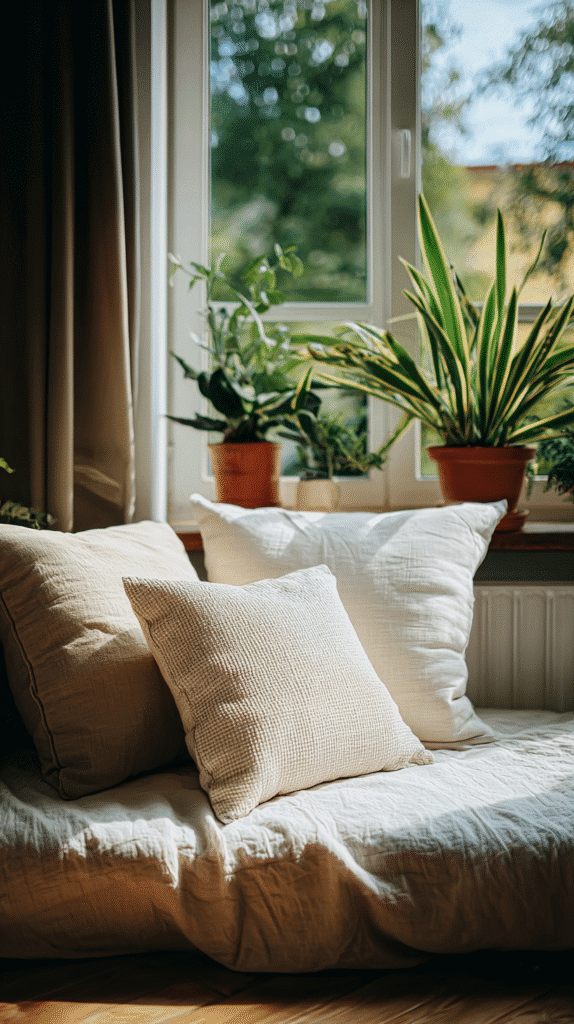
If you share your space or have limited square footage, you can still create powerful nervous system signals through small intentional shifts:
- Choose one corner, chair, or spot as your dedicated reset zone
- Communicate your routine gently to those around you, setting expectations without confrontation
- Focus on sensory cues rather than large-scale redecorating. Soft lighting, comfortable textures, soothing aromas are accessible in any space
If you’re working with limited square footage, this walkthrough on turning a tiny apartment into a nervous system sanctuary shows how to use light, texture, and layout to create calm without major upgrades.
Your Home as a Source of Renewal
Creating a nervous system sanctuary at home is about quiet, intentional signals that reassure your nervous system rest and relaxation are safe and accessible right where you are.
This week, consider choosing just one element and start there. Notice how your body responds. Allow your home to become not just a place you occupy, but a place that restores you, moment by moment, cue by cue.
Your home can be more than a place to live, it can be a daily sanctuary offering peace amid the noise of the world.

